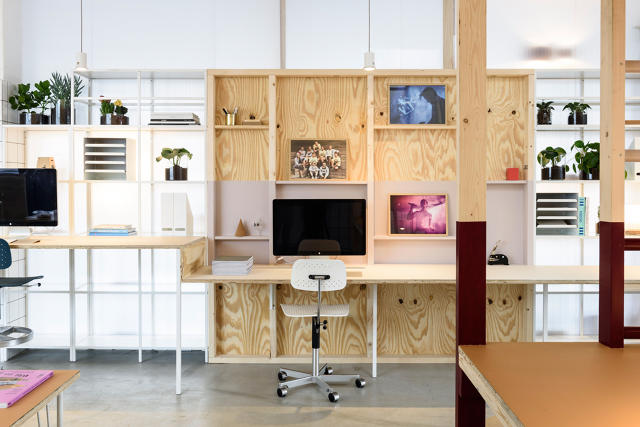Ikea usually keeps a close lid on what it is working on next. But with Space10, an innovation lab recently opened in Copenhagen's hip meatpacking district, Ikea is looking to change all that. The Swedish furniture giant is throwing the doors wide open to progressive thinkers who want to help solve the next couple decades' biggest home design problems, all on Ikea's dime.
Located in a fishery building redeveloped by architecture studio Spacon & X in Scandinavia's arguable design capital, Space10 almost feels like Ikea's answer to the artist-in-residence programs you see at companies like Autodesk and Microsoft, but with a typically Scandinavian twist: it's independent of Ikea. Although Ikea foots the bill for Space10, and gets a first look at all the concepts that come out of it, the day-to-day operations are handled by Rebel Agency, a small Danish design firm founded by Carla Cammilla Hjort. It's not just good marketing, it's a way for Ikea to get an early look at bold new ideas that might eventually disrupt their business—and possibly bring them to market first.
The seeds for Space10 were planted three years ago, when Rebel Agency helped Ikea design the Bråkig furniture collection. The collection sold so well that Ikea's CEO invited Hjort and her colleague Simon Caspersen in for a six-hour meeting to pitch him what they wanted to do next. "Instead of just creating a better future for Ikea, our starting point was asking how Ikea could help create a better future for the world," Caspersen says. "So what we suggested was, let's get rid of the whole client-agency model, have Ikea pay the basic fees and costs of running a space, and then devote ourselves to looking 10 or 20 years down the pipeline, and how Ikea can be relevant in that world."

The mission of Space10 is to investigate the future of urban living through a series of labs. Each lab lasts three months, and has a certain theme—the first is Fresh Living, a collection of projects centered around health. During each lab, a dozen or so designers from around the world are invited into Space10 to give talks, explore concepts, and prototype ideas. After two months, the doors of Space10 are thrown open to the public. For the next 30 days, the public can come in and check out the prototypes. Then Space10 rinses and repeats around a new theme, with all new designers.
Space10's first lab resulted in more than 15 prototypes. These include a kitchen table that converts surface heat (say, from a coffee pot or a pan) into electricity; a glowing faucet that encourages you to take shorter showers; a smart chair that is impossible to sit on if you've been too sedentary throughout the day; and an interactive work of art that visualizes your family's health habits.
None of these products are likely to hit Ikea's shelves anytime soon, but that's not the point, says Göran Nilsson, Ikea Concept Innovation Manager. He says that Space10 is a way for Ikea to hedge its bets and ensure that the company can successfully innovate in the future. "There's only so much innovation you can do behind closed doors," Nilssen says. "In the old days, big companies would try to innovate internally forever. But being successful long-term is all about being transparent enough to be challenged by new ideas, and inviting enough to accept them." The idea is to let outside designers work on possibly disruptive new ideas, right under their nose, with the hopes that these fresh voices and visions will help prevent Ikea's vision from going stale. Or, as Space10's Simon Caspersen puts it, "If you try to create every new idea in-house, you will eventually fail, because you can't compete with the entire world forever."
So from Ikea's perspective, Space10 is worth the expense, even if no new products immediately come out of it. Ikea's designers will still be watching, and the ideas that flow through Space10 may eventually inspire the Ikea catalog of tomorrow, if not by spring 2016, than by spring 2026. Even so, Ikea seems bullish on the notion that Space10 may pay for itself, sooner rather than later. "There could easily be more Space10s in the world soon," Nilssen says. "There's no reason to have just one."